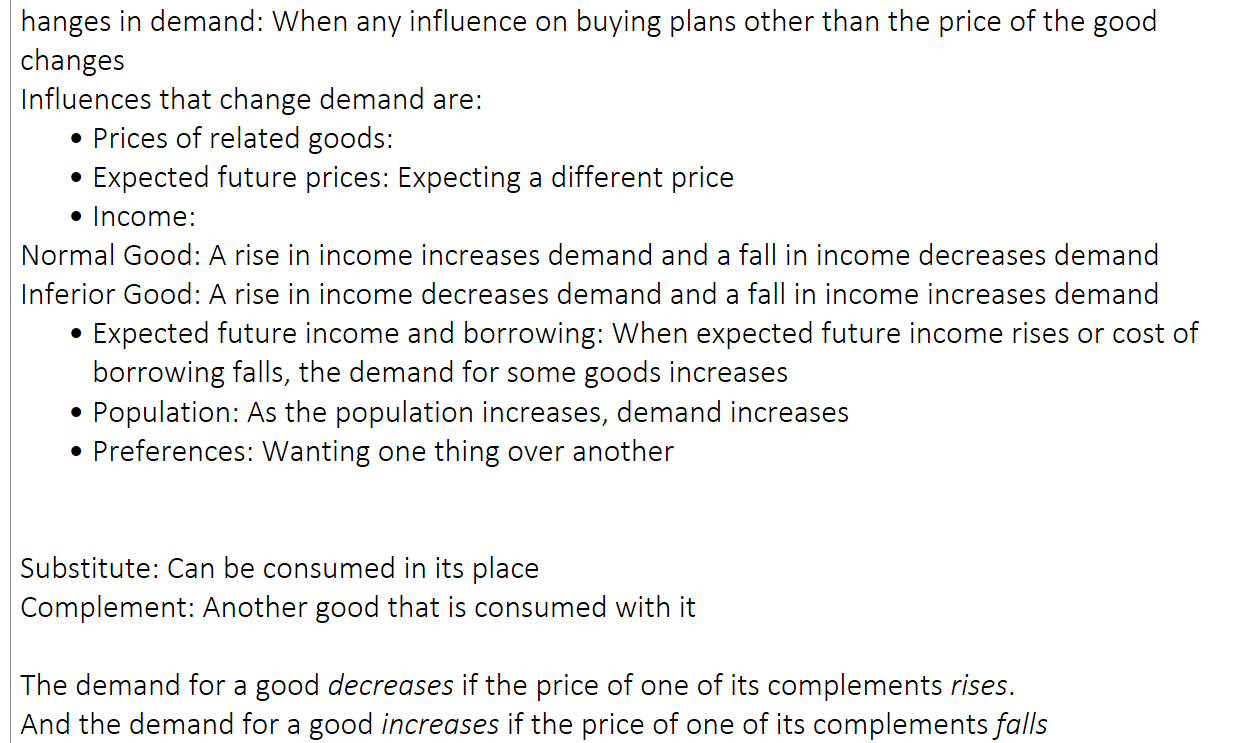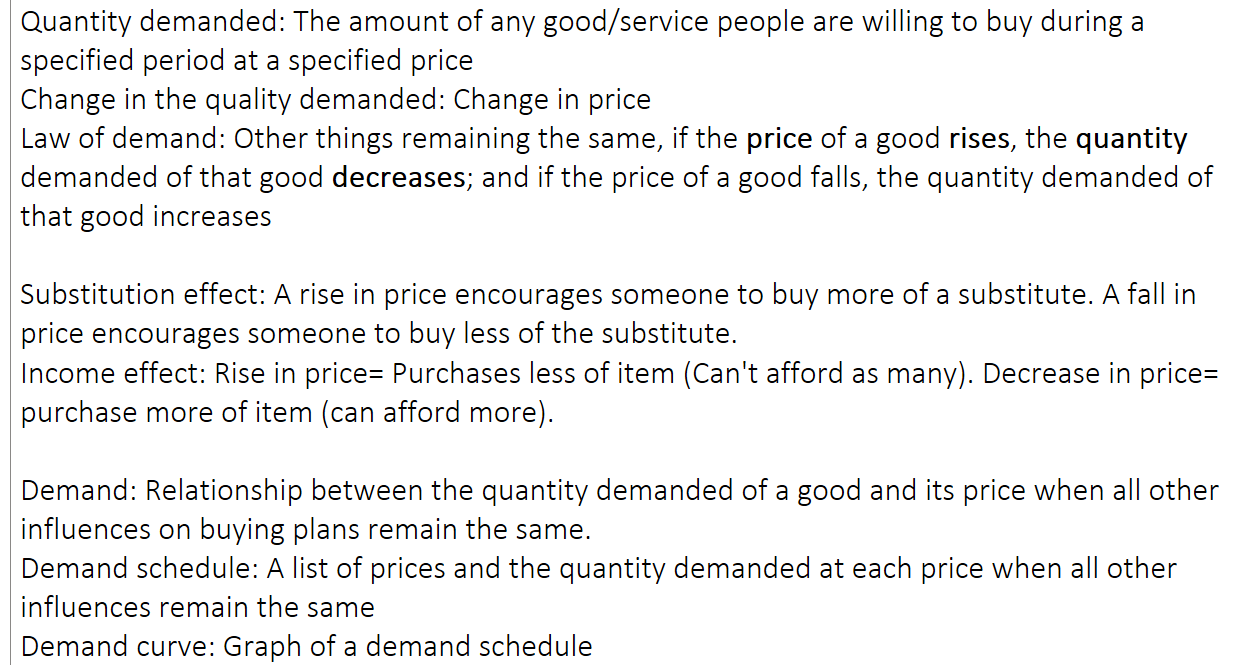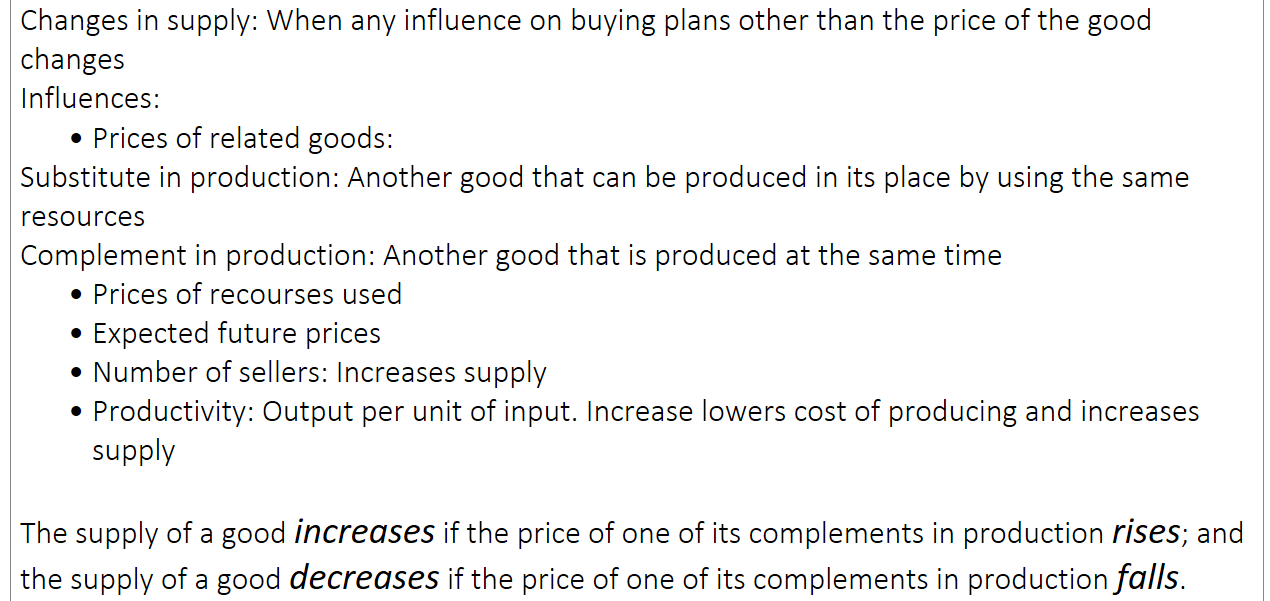Demand and Supply
Quantity demanded: The amount of any good/service people are willing to buy during a specified period at a specified price
Change in the quality demanded: Change in price
Law of demand: Other things remaining the same, if the price of a good rises, the quantity demanded of that good decreases; and if the price of a good falls, the quantity demanded of that good increases
Substitution effect: A rise in price encourages someone to buy more of a substitute. A fall in price encourages someone to buy less of the substitute.
Income effect: Rise in price= Purchases less of item (Can't afford as many). Decrease in price= purchase more of item (can afford more).
Demand: Relationship between the quantity demanded of a good and its price when all other influences on buying plans remain the same.
Demand schedule: A list of prices and the quantity demanded at each price when all other influences remain the same
Demand curve: Graph of a demand schedule
Market demand: Sum of the demands of all buyers in a market
Changes in demand: When any influence on buying plans other than the price of the good changes
Influences that change demand are:
Prices of related goods:
Expected future prices: Expecting a different price
Income:
Normal Good: A rise in income increases demand and a fall in income decreases demand
Inferior Good: A rise in income decreases demand and a fall in income increases demand
Expected future income and borrowing: When expected future income rises or cost of borrowing falls, the demand for some goods increases
Population: As the population increases, demand increases
Preferences: Wanting one thing over another
Substitute: Can be consumed in its place
Complement: Another good that is consumed with it
The demand for a good decreases if the price of one of its complements rises.
And the demand for a good increases if the price of one of its complements falls
Change in quantity demanded: Change in prices when all other influences remain the same
Change in demand: Effect of a change in any of the other influences

Event Increases demand:
Creates a shortage at current price
Price rises, so quantity supplied increases
Equilibrium: Price and quantity increase
Event decreases demand:
Creates a surplus at current price
Price decreases, so quantity decreases
Equilibrium: Price and quantity decreases




Quantity supplied: The amount that it is willing and able to sell during a specified period at a specified price.
Change in the quality supplied: Change in price
Law of supply: Other things remaining the same, if the price of a good rises, the quantity supplied of that good increases; and if the price of a good falls, the quantity supplied of that good decreases.
Supply: Relationship between the quantity supplied and the price of a good when all other influences on buying plans remain the same.
Supply schedule: A list of the quantities supplied at each different price when all other influences remain the same
Supply curve: A graph of a supply schedule
Why? Because of Profit Effect.
Pricier items= stronger incentive to produce more
Market Supply: The sum of the supplies of all the sellers in a market
(the sum of the quantities supplied at each price by all produces of the good)Changes in supply: When any influence on buying plans other than the price of the good changes
Influences:
Prices of related goods:
Substitute in production: Another good that can be produced in its place by using the same resources
Complement in production: Another good that is produced at the same time
Prices of recourses used
Expected future prices
Number of sellers: Increases supply
Productivity: Output per unit of input. Increase lowers cost of producing and increases supply
The supply of a good increases if the price of one of its complements in production rises; and the supply of a good decreases if the price of one of its complements in production falls.



Market equilibrium: When quantity demanded equals the quantity supplied
Equilibrium quantity: The quantity bought and sold at the equilibrium price
Law of market forces: When there is a surplus of a good, its price falls; and when there is a shortage of a good, its price rises.
